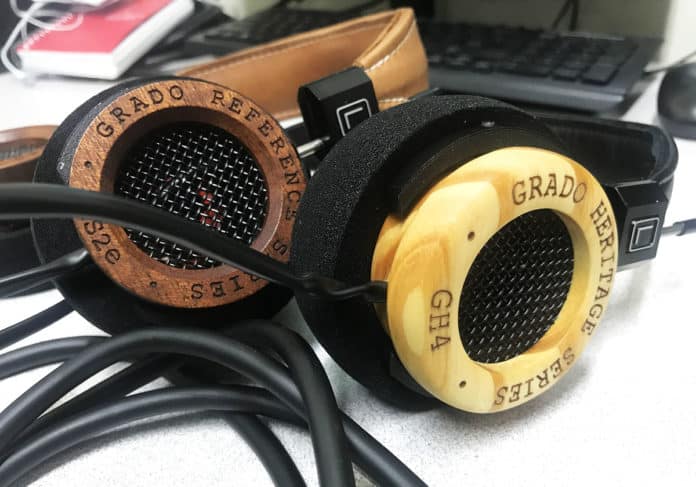This week, one of our subscribers on YouTube asked if I could compare the Grado GH4 to the Grado RS2e! This sparked my interest because I had never listened side-by-side. Meanwhile, the RS2e remains a favorite by many Grado fans, and the GH4 is a limited edition headphone in the same price range! So which one is better for you? Let’s take a closer look with this Grado GH4 vs Grado RS2e review!
Grado GH4 vs Grado RS2e Comparison Review
In the Box
Both the Grado GH4 and the Grado RS2e have very simple packages. Both come with their respective headphones, a 3.5 mm to 6.35 mm adapter, and some documentation.
Design
Look and Feel
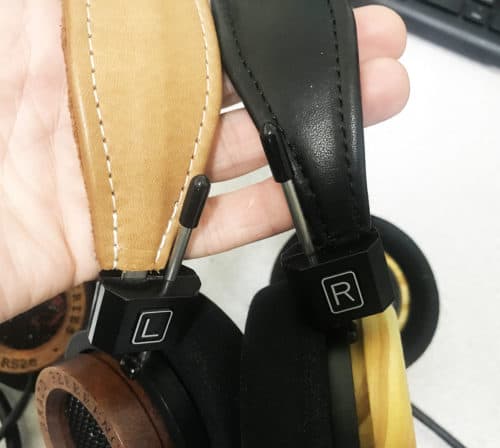
Both the Grado GH4 and the Grado RS2e have an old-school look to them, although the RS2e feels somehow older. In part, I think the brown leather of its headband gives it age in a different way than the clean black leather of the headband of the GH4. However, despite this slight different in vibe, both are gorgeous and simplicity and attractiveness. Additionally, the leather of the GH4 feels a bit softer than that of the RS2e.
One major difference between the Grado GH4 and the Grado RS2e is the shape and type of wood of the earcups. Additionally, they are very similar in size, although the GH4 seems to perhaps be a little bit bigger.
On one hand, the Grado GH4 is made of Norwegian pine and has smooth, rounded edges. The light color of the pine contrasts strongly from the black of the ear pads and headband.
On the other hand, the earcups of the Grado RS2e are made of mahogany. Darker in color, their shape also has more geometry to it, featuring a bevel near its grill.
Comfort and Fit
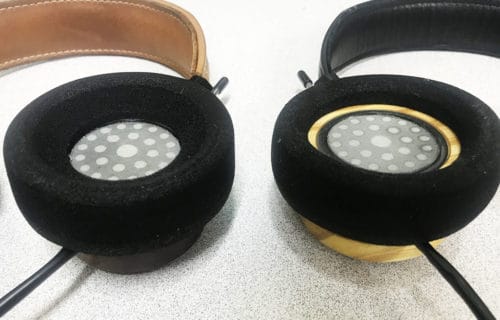
Both the Grado GH4 and Grado RS2e are lightweight and I could not clearly tell the difference between their weights while holding them in my hands.
As a result, both headphones sit similarly on the head, with just a tad bit of clamping force, but mostly just sitting on the ears. The earpads of both headphones are a little bit different from each other in shape. However, they are similar in make-up. They are made of foam, with no coating. They also only follow the shape of the earcup, leaving a big hole where the ear sits. As a result, both are equally comfortable and uncomfortable. They are comfortable because they are so lightweight, but they are uncomfortable because my ear touches the earcup. However, the RS2e wins in the comfort contest because it’s earpad covers its earcup a little bit more than the GH4.
Cable
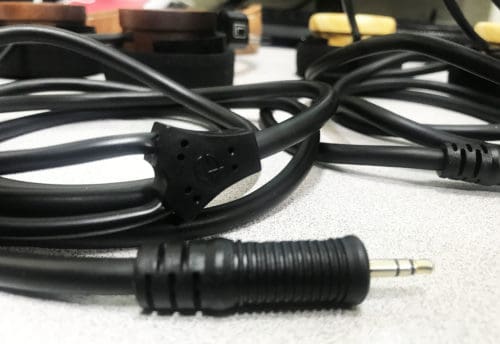
The cables of the Grado GH4 and Grado RS2e are identical. Both are permanently attached to both earcups, and have a heft and thickness to them. Additionally, their connectors feel extremely strong. Both are a little bit bulky, but have a manageable length and are generally easy to maintain.
Drivers
The drivers of the Grado GH4 and Grado RS2e feature the Grado signature driver. They are matched to .05 dB of one another, thus creating a firmer soundstage.
Sound
Low Frequencies

The low frequencies of the Grado GH4 and the Grado RS2e have a sense of punchiness and groove. Overall, the RS2e’s low end feels slightly slightly louder than the GH4 due to a boost around what sounded like 60Hz. By contrast, the GH4 has a boost at what sounded like 40 Hz. As a result, it seems a little bit less loud, but feels slightly deeper.
For example, when I was listening to the song Normal by Conor Oberst and the Mystic Valley Band, the kick drum had slightly punchier feel with the Grado RS2e. By contrast, the kick seemed a bit deeper, with deeper room harmonics with the Grado GH4. When the bass guitar entered, it sounded somewhat tighter with the RS2e, but more extended with the GH4.
Middle Frequencies
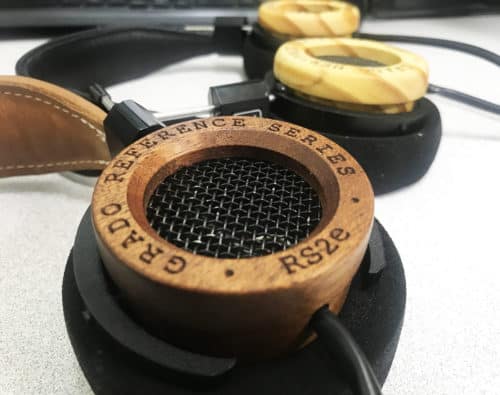
The midrange of both the Grado GH4 and the Grado RS2e had a feeling of harmonic complexity alongside a feeling of color and character. The low-mids of the GH4 has a little bit of extra energy than the RS2e, which feels like it has a small cut at around 300 Hz. However, the RS2e seemed to have a little boost around 800 Hz, which gave a little extra energy to the middle mids, making vocals feel thicker, and giving added energy to midrange rich instruments like guitars, horns, strings, and keys. Lastly, both the GH4 and RS2e have a similar sense of emphasis in the high mids at both the bottom of it around 2 kHz and at the top of it around 5 kHz. As a result, both have a sense of presence, attack, and detail there. However, the RS2e also had a little bit of a stronger cut between those two emphasized areas around 3 kHz. As a result, its presence felt a little bit different and less intimate than the GH4.
For example, when I was listening to the song When It Was Wrong by The California Honeydrops, the bass guitar felt slightly bigger in the mix with the GH4, whereas the organ and electric guitars felt slightly thicker with the RS2e. However, the organ and guitars leaned more presently forward with the GH4. Additionally, the vocal sounded a little bit fuller with the RS2e, but more articulate with the GH4.
High Frequencies
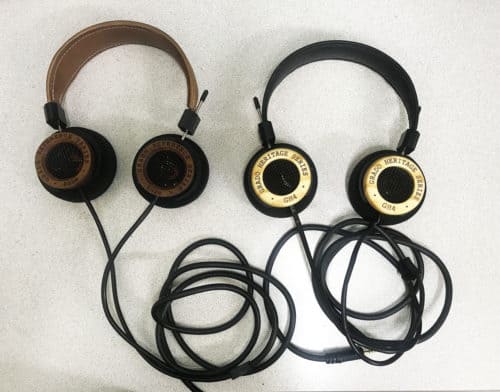
The high frequencies of both the Grado GH4 and the Grado RS2e have an aesthetically pleasing sense of color, and loads of detail. And while both headphones have highlights in the highs, their areas of emphasis are slightly different from each other. On one hand, the Grado GH4 has emphasis in the upper treble and upper octave around what sounded like 8 kHz and 10 kHz respectively. Conversely, the RS2e seemed to have boosts in the upper treble and upper octave around what sounded like 9 kHz, 12 kHz, and 14 kHz. As a result, the RS2e had a sort of brighter feeling to its extension, whereas the GH4 felt more textural. However, both headphones had a substantial cut in the lower treble around what sounded like 6 kHz. As a result, both had a feeling of great spaciousness in the highs which separated instruments with thicker high frequency information from those with extended high frequency information.
For example, when I was listening to the song Quizas Quizas Quizas by Pink Martini, the breath of the lead vocal sounded more extended with the RS2e, whereas it felt more textural with the GH4. The same was true with the feeling of the shaker, guiro, and hand drum. That said, the vocal felt a little bit more sibilant with the GH4.
Soundstage
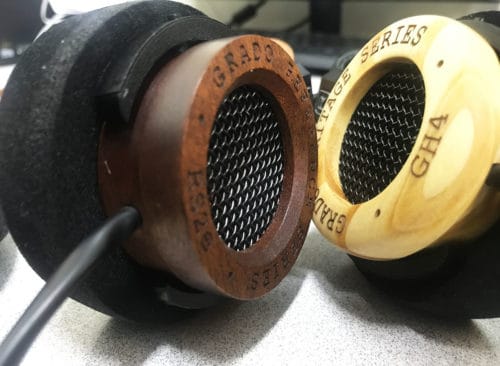
The soundstage of the Grado GH4 and Grado RS2e are remarkably wide with nuance in the other dimensions as well. However, I noticed the biggest difference between the two in the shape of the height and depth. Do to their different feelings of low-end and high-end extension, the height seemed more expensive in the highs with the RS2e, but more expansive in the lows with the GH4. Likewise, the shape of high-mids made instruments with high-mid information sit closer in space with the GH4. However, that also means it had greater contrast with the instruments sitting further back in space.
For example, when I was listening to the song A Bigger Paper Bag by Father John Misty, the cymbals sounded higher in space with the RS2e than with the GH4. Likewise, the lows of the kick, toms, and bass guitar felt lower in space with the GH4. Additionally, the vocal, electric guitars, and strings felt closer in space depthwise with the GH4 than the RS2e. They contrasted stronger with the far off acoustic guitar. By comparison, the acoustic felt more on par with the keys depth-wise with the RS2e. That said, there was a finer feeling of nuance and balance to the depth of the RS2e.
Overview
Overall, the Grado GH4 and the Grado RS2e are great headphones with beautiful feelings of character and musicality. So which one is right for you? I personally enjoyed vocal centric music better with the RS2e because higher, brighter vocals feel a little bit fuller and aren’t as sibilant. By contrast, I liked the GH4 better for darker, deeper vocals because it brings them forward in the mix.
The Grado GH4 and the Grado RS2e are available for the best price here:
MajorHiFi may receive commission through retail offers.
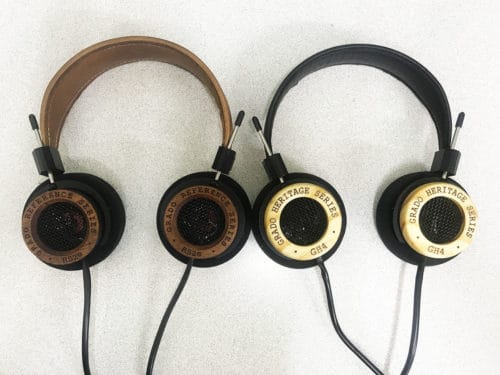
MAJORHIFI may receive commissions from retail offers.


